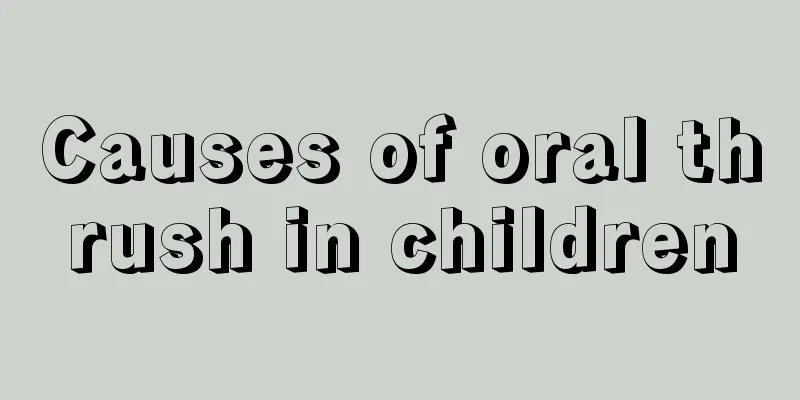Causes of oral thrush in children

|
Many mothers may not know how to prevent oral thrush in young children, and they do not know what kind of disease it is. In order to help mothers take better care of our babies, we recommend that mothers can understand the causes of infantile thrush introduced in this article. This can improve your ability to take care of your babies and keep our babies away from the harm of infantile thrush. Thrush, also known as snow mouth disease, candidal disease, thrush, thrush, and white sore of mouth, is a common disease in children's oral cavity. This disease is caused by the frequent occurrence of white pseudomembrane in the mouth, which is sometimes as white as snow. Therefore, it is also called snow mouth disease, which is common in infants and young children. This disease is caused by Candida albicans infection, which is manifested by the formation of white spots on the mucosal surface. The fungus is sometimes found in the mouth and can occur in infants who are malnourished, have poor oral hygiene, or are physically weak, or in frail adults. Newborns are mostly infected through the birth canal, or through contamination from unclean nipples or the feeder's fingers. Babies with thrush usually feel oral discomfort and sometimes pain, and most of the time the baby will reduce breastfeeding as a result. Thrush can also cause the baby to breathe insufficiently while breastfeeding, resulting in insufficient nutrient intake and nutritional deficiencies. Snow mouth disease is caused by Candida albicans, which is one of many microorganisms. Candida albicans can also be found in the mouths of healthy infants and young children, but it does not cause disease. Whether the disease occurs mainly depends on the body's adaptability and resistance. Therefore, the disease is common in infants and young children with unclean oral cavity and nutritional deficiencies. 1. The mother's vagina is infected with fungi and the baby is infected when it passes through the birth canal and comes into contact with the mother's secretions during birth. 2. Failure to thoroughly sterilize baby bottles and nipples, and unclean nipples of the mother during breastfeeding can all be sources of infection. 3. Contact with food, clothing and toys infected with Candida albicans. In addition, infants and young children begin to grow teeth at 6-7 months old, and their gums may feel slightly swollen and painful at this time. Infants and young children then like to bite their fingers and toys, which can easily bring bacteria and mold into the mouth and cause infection. 4. Living in a group in kindergarten may sometimes cause thrush due to cross infection. 5. Long-term use of antibiotics or inappropriate use of hormone treatment will cause an imbalance of bacterial flora in the body, allowing fungi to take advantage of the situation and multiply in large numbers, causing thrush. The above are the causes of thrush in young children. I hope mothers can prevent these causes. You should pay attention to your vaginal hygiene in your life, because when the baby is born, it may be infected by contact with the mother's secretions through the birth canal, or the disease may be caused by poor disinfection of the bottle. |
<<: What to do if children have dark circles under their eyes
>>: The reason why baby's eyes turn blue
Recommend
What to do if baby's skin is flooded
"Skin is flooded" is a dialect peculiar...
What is the best way to treat hernia in children?
Hernia problems in children usually occur more fr...
What are the obvious symptoms of a baby's brain development disorder?
It is very common for babies to have brain develo...
What are the symptoms after chickenpox vaccination?
As we all know, chickenpox is a disease that caus...
At what age should babies start brushing their teeth?
We all know that we need to brush our teeth every...
Is pediatric massage effective in treating colds?
Many families do not want to give their children ...
Why does a child have high white blood cell count and repeated fever?
If a child has recurring high fever and goes to t...
Two-year-old child with yellow and sparse hair
For normal people, their hair should be black and...
Why does a child have a stuffy nose at night?
Children generally have weaker constitutions and ...
What are the dangers of a child having a high fever?
When a child is sick, parents are the most worrie...
What to do if your child has anorexia?
How can I improve my child's picky eating and...
What causes fecal incontinence in boys?
Under normal circumstances, the human body is abl...
Is rotavirus positive serious?
Many parents have encountered the situation of ba...
How to treat chapped lips in children?
In autumn, due to the dry weather, many children ...
Treatment of eye mucus in babies
Every life begins as a baby. I believe that for p...









